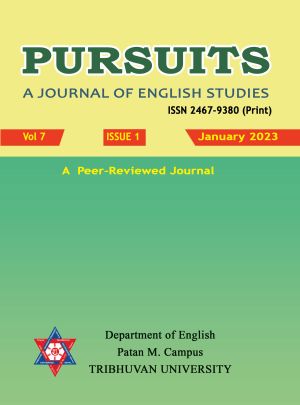Recognition and Identity of Minorities in Nepal
DOI:
https://doi.org/10.3126/pursuits.v7i1.55391Keywords:
Culture, Diversity, Ethnicity, Identity, Minorities, Nationality, RecognitionAbstract
This article underpins the multitude of minorities’ identity in cultural diversity of Nepal. Identity for conscious beings including the underprivileged in Nepal becomes crucial when they feel being discarded and marginalized in almost all aspects of the political territory wherein they deserve the right to lead respectful citizenry lives. This paper questions the deprivation of the minorities including Muslims, and Dalits from the social and political engines of development. The article seeks to unleash the minorities from the pool of domination, and oppression by exploring the solutions to the problems as faced by the deprived communities over the centuries in Nepal. Identity is associated with the cultural and social properties which are sought after by the respective groups. These properties enrich the communities and let them express and retain their significance through in both societal and political lives. The existing literature shows that Muslims, and Dalits are the most marginalized and deprived communities in almost all sectors of political, social and cultural life the country accorded as the nation to respect the principles of equality, diversity, and justice in the constitution of Nepal 2015. However, these communities suffer inequality, injustice, and discriminations in nearly all respects of life. The state does not seriousness in identifying and addressing the problems of these communities in a substantive manner. This paper by employing the qualitative research design has studied the secondary data on identity and recognition of the deprived communities to investigate into the status of Muslims, and Dalits in the light of the principles of multiculturalism.




